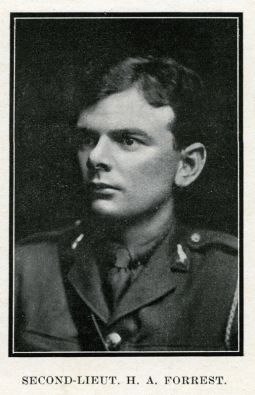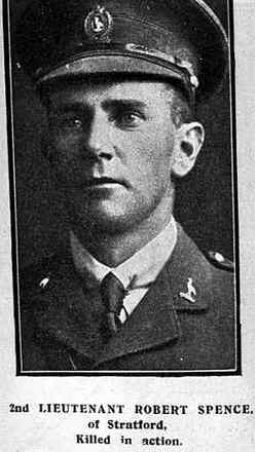Two promising legal careers were cut off a century ago on 12 October 1917 when 846 New Zealand soldiers were killed in the Battle of Passchendaele.
Among the many New Zealand soldiers who were slaughtered in the futile attack in mud and rain were 24-year-old Lieutenant Hugh Alexander Forrest and Second Lieutenant Robert Spence, aged 38. Both were in legal practice when they joined up.
Lieutenant Hugh Forrest attended Auckland Grammar School before working for H Morpeth of the firm Morpeth Gould as a solicitor's clerk - the usual practice for entry to the profession. At the same time he studied law at Auckland University College and passed his solicitor's qualifying examination in 1914.

Forrest was active in the territorial forces and was appointed a Second Lieutenant on 24 October 1912 after serving for two years in the 54th (North Auckland) Senior Cadets. He was promoted to Lieutenant in the territorial forces in March 1916. He enlisted on 24 July 1916 and was given the rank of Second Lieutenant on arrival at Trentham Camp. He was promoted to Lieutenant in February 1917. His medical examination report on enlistment shows he was 5 foot 8 tall (1.73 metres) and weighed 10 stone 4 pounds (65.3 kg).
On 16 February 1917 Forrest embarked from Wellington with the New Zealand Rifle Brigade, J Company. He was killed in action on 12 October 1917. The 2nd Battalion, of which Forrest was a member, attacked at 5:25am but a totally ineffective allied barrage meant there was no protection from German machinegun fire and most of the casualties occured in the first few hours.
He is remembered on the College Rifles Rugby Club Roll of Honour, the Devonport Primary School memorial granite tablet and the Auckland Grammar School Memorial. He is also remembered through Forrest Hill Road in Milford, which was renamed from White's Hill by the Takapuna Borough Council in 1919.
Second Lieutenant Robert Spence built a large legal practice and national reputation from his base in Stratford. Born in Woodstock on the South Island’s West Coast, he secured the highest marks in the country in his final law examination, and was also the youngest student (at 18) ever to pass. He moved to Taranaki and formed the firm Spence and Stanford in Stratford. He was very active in litigation, appearing regularly in the Magistrates Courts and Supreme Court and also travelling to Wellington to appear in the Court of Appeal in a number of cases.

After enlisting in March 1916, Spence proceeded to training at Trentham Camp near Wellington, as a corporal. His medical examination showed he was 5 foot 9 tall (1.75 metres), weighed 167 pounds (75.7 kg) and had blue eyes and brown hair. In May 1916 Taranaki Magistrate WR Haselden SM "before commencing the Court business this afternoon referred to the fact that during his recent visit to Wellington he had the pleasure of meeting Mr R Spence, and was pleased to say that he was wearing two stripes, with a chance of soon receiving a third." (Taranaki Daily News, 20 May 1916). He did receive a third stripe, and in October he passed the examination for first appointment to a commission, receiving promotion to Second Lieutenant before he embarked from Wellington with the New Zealand Rifle Brigade on 16 February 1917.
He arrived at Devonport in England on 26 April and was at Sling Camp until 30 May 1917 when he proceeded to France, going into action on 11 June. On 12 October 1917, as a member of the 3rd Battalion of the New Zealand Rifle Brigade, Spence went into action when the battallion joined the attack at 6:30am in heavy rain. The battalion quickly encountered heavy machine gun fire. Almost all of the 3rd Battallion's officers were casualties and by 8am the attack had come to a standstill. Spence's body was not recovered and his name is on the Tyne Cot Memorial, Tyne Cot Cemetery, Zonnebeke, West-Vlaanderen, Belgium.
Spence is remembered in the Stratford Memorial Hall of Remembrance, opened in 1920 by Edward, Prince of Wales. His portrait is there along with other soldiers who died in the War.
